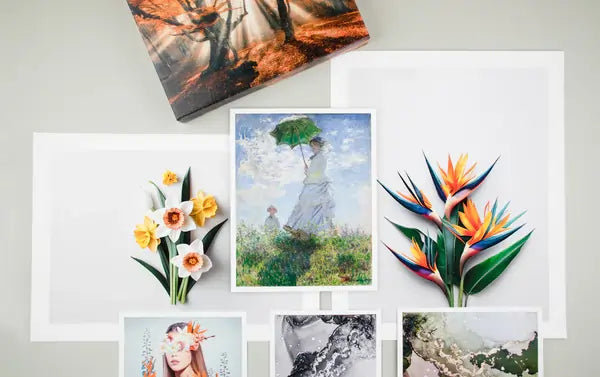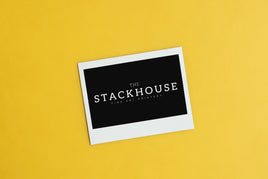TL;DR: Matting adds protection, balance, and polish to your artwork. It keeps prints off the glass, improves presentation, and meets common gallery requirements. Choose archival mats, a neutral color, and the right border width to elevate your display.
Matting is the border that surrounds a print inside a frame or in a ready-to-sell sleeve. Beyond looks, it serves an important protective role by keeping the print surface away from glass and helping control moisture contact. The result is a cleaner, more professional presentation that lasts longer and sells more confidently.
Why Matting Matters
Matting protects the print from touching glazing and creates a visual buffer that helps the eye settle on the image. Many shows and galleries require matted work because it looks finished, ships well, and hangs consistently. If you sell at markets or retail, matted prints let customers preview the final framed look without the frame cost.
Choosing a Mat Color
For most art and photography, a clean white or natural white mat is the safest choice. It supports color accuracy, reduces visual noise, and fits a wide range of interiors. White mats also make it easier for buyers to imagine your work in their space. If you want the simplest path to a cohesive presentation, start with a neutral white. See our ready-to-frame Matting Package Prints for consistent, gallery-friendly sets.
Material Quality and Archival Choices
Avoid standard paper mats for fine art. Over time, wood-pulp mats can turn acidic and discolor the art. Instead, choose archival, acid-free alpha-cellulose or cotton rag mats. These materials resist yellowing and help preserve color for decades. All mats used in our Matting Packages are conservation quality and matched to our fine art and photo papers for the best longevity.
How Wide Should the Mat Be?
Mat width influences the perceived scale and balance of the piece. As a rule of thumb, choose a mat that is wider than the frame’s visible lip so the print feels centered and intentional. Typical widths range from 2 to 4 inches for small to mid-size prints, and wider for large formats. Oversized mats on small prints create a classic gallery look and can make a modest piece feel substantial on the wall. When planning signatures or edition marks, review our border and size guide to leave room at the bottom margin.
Match Mats to Print Surface
- Fine art papers: Matte giclée papers pair naturally with white mats and minimal glare. Explore giclée fine art prints like Hot Press Bright or Photo Rag for a smooth, gallery-grade finish.
- Photo papers: Luster and glossy papers look crisp under a white mat and can be paired with anti-reflective glazing if needed. Compare surface choices in our photo prints.
- Canvas: Canvas is usually framed without mats. If you want a matted look, print on paper instead of canvas for precise fit and flatness.
When to Use a Matting Package
Matting packages are ideal when you want a consistent, ready-to-frame product for shows, retail, or shipping. Our sets include the print, an archival bevel-cut mat, backing, and a clear protective sleeve for a clean, professional presentation. If you need a rigid, frame-ready piece without a mat, consider mounted prints to simplify hanging and handling.
Practical Tips for a Professional Finish
- Use archival, acid-free mats and backing to protect color over time.
- Keep mats neutral for consistency across collections and easier sales.
- Leave space for signing or numbering below the image if you sell editions.
- Package in clear sleeves to keep dust and fingerprints off the print.
Want a polished, gallery-ready look without the hassle? Order Matting Package Prints for consistent quality, or explore giclée fine art prints and photo prints to build your own mat and frame set.










